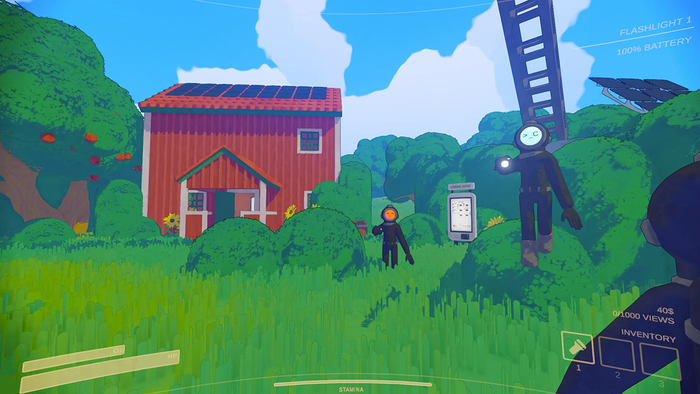Gamasutra analyst Matt Matthews <a href=http://www.gamasutra.com/view/feature/6409/npd_behind_the_numbers_may_2011.php>sizes up U.S. sales</a> of the Nintendo 3DS to those of the PSP and DSi, as Wedbush's Michael Pachter tells us Nintendo's $250 device is

[As part of his May NPD analysis of U.S. physical video game retail, Gamasutra analyst Matt Matthews sizes up U.S. sales of the Nintendo 3DS to those of the PSP and DSi, as Wedbush's Michael Pachter tells us the $250 device is "still a luxury item for hardcore gamers."] While Nintendo is managing the end of the Wii and the beginning of the Wii U, they are also managing four different models of handhelds on the market. The Nintendo DS Lite is still available, but at $100 it appears to be on its way out. The Nintendo DSi ($150) and larger Nintendo DSi XL ($170) are still the dominant models for the DS platform, as indicated by the platform's $150 ASP in recent months. And the new Nintendo 3DS ($250) appears to be off to a somewhat rocky start, both in terms of hardware and software. To get a feel for how the 3DS is doing, we've collected some historical data from two other system launches that were conveniently made during the same time of year. Specifically, we can compare the launch performances of the Nintendo DSi and Sony PSP to that of the Nintendo 3DS. For the PSP and 3DS, we are also in a position to discuss the performance of software unit sales, thanks to exclusive data provided by the NPD Group. The PSP and 3DS both launched at the end of March (in 2005 and 2011, respectively), while the DSi was launched in early April. As of the end of the May reporting period, each platform had been out for approximately 60 days. (To be precise, the PSP was out for 66 days, the 3DS for 63 days, and the DSi for 56 days.) The table below gives a comparison of the U.S. sales rates for each of these systems during the launch period. For the record, Nintendo publicized Nintendo DSi sales during that system's launch, but has declined to do so for the Nintendo 3DS.  The figures above reveal that the Nintendo 3DS is selling at about half the rate that the Nintendo DSi did during its launch, and well behind the launch rate for the PSP. Just as the 3DS appears to be competing with the DSi today, we observe that the DSi itself launched in 2009 at a premium price against the Nintendo DS Lite, a strong, less-expensive, mostly-compatible competitor from within the same company. Yet the DSi managed sales of nearly 1.3 million units in less time than it has taken the 3DS to reach sales of nearly 700,000 units. Surely, the $100 price differential between the 3DS and DSi is more significant than the $40 differential between the DSi and DS Lite back in 2009, and that certainly explains much of the difference in sales. As Wedbush analyst Michael Pachter wrote to us, "the 3DS is too expensive for most young children, so [it is] still a luxury item for hardcore gamers." However, the PSP was also priced at $250 at a time when the Nintendo DS was priced at $150, although we certainly can't say that the Nintendo DS was a strong competitor to the PSP during that period. (In fact, the Nintendo DS had monthly sales well under 100,000 units several times during 2005.) During its comparable launch period, the PSP sold over 1.2 million systems in about the same time it has taken the Nintendo 3DS to reach sales of nearly 700,000 units. Pachter has lamented the low tie ratio for the Nintendo 3DS, which he intimated to be approximately 2.0 (i.e. two units of software for each unit of hardware). According to exclusive data provided to us by the NPD Group, the tie ratio for Sony's PSP during its comparable launch period is approximately 2.1. Moreover, the 3DS has the benefit of being backward-compatible with all previous DS and DSi software, while the PSP was the first in its line of systems and had nothing with which to be compatible. While it may be disappointing that 3DS owners aren't buying more 3DS-specific software, it is by no means guaranteed that they aren't buying anything. Sales of 3DS-specific software will surely pick up as more titles are released, especially in the latter half of 2011 when Nintendo's Mario Bros. and Mario Kart titles arrive for the system. Finally, third parties have certainly begun shifting development over to the 3DS from the DS, and we expect that the DS will be surviving on limited shovelware and licensed titles by the beginning of 2012. Once the DS becomes a less attractive platform, Nintendo consumers will likely move over to the 3DS, and that will accelerate once Nintendo drops the system's price to $200 sometime in February or March of next year, as we wrote last month.
The figures above reveal that the Nintendo 3DS is selling at about half the rate that the Nintendo DSi did during its launch, and well behind the launch rate for the PSP. Just as the 3DS appears to be competing with the DSi today, we observe that the DSi itself launched in 2009 at a premium price against the Nintendo DS Lite, a strong, less-expensive, mostly-compatible competitor from within the same company. Yet the DSi managed sales of nearly 1.3 million units in less time than it has taken the 3DS to reach sales of nearly 700,000 units. Surely, the $100 price differential between the 3DS and DSi is more significant than the $40 differential between the DSi and DS Lite back in 2009, and that certainly explains much of the difference in sales. As Wedbush analyst Michael Pachter wrote to us, "the 3DS is too expensive for most young children, so [it is] still a luxury item for hardcore gamers." However, the PSP was also priced at $250 at a time when the Nintendo DS was priced at $150, although we certainly can't say that the Nintendo DS was a strong competitor to the PSP during that period. (In fact, the Nintendo DS had monthly sales well under 100,000 units several times during 2005.) During its comparable launch period, the PSP sold over 1.2 million systems in about the same time it has taken the Nintendo 3DS to reach sales of nearly 700,000 units. Pachter has lamented the low tie ratio for the Nintendo 3DS, which he intimated to be approximately 2.0 (i.e. two units of software for each unit of hardware). According to exclusive data provided to us by the NPD Group, the tie ratio for Sony's PSP during its comparable launch period is approximately 2.1. Moreover, the 3DS has the benefit of being backward-compatible with all previous DS and DSi software, while the PSP was the first in its line of systems and had nothing with which to be compatible. While it may be disappointing that 3DS owners aren't buying more 3DS-specific software, it is by no means guaranteed that they aren't buying anything. Sales of 3DS-specific software will surely pick up as more titles are released, especially in the latter half of 2011 when Nintendo's Mario Bros. and Mario Kart titles arrive for the system. Finally, third parties have certainly begun shifting development over to the 3DS from the DS, and we expect that the DS will be surviving on limited shovelware and licensed titles by the beginning of 2012. Once the DS becomes a less attractive platform, Nintendo consumers will likely move over to the 3DS, and that will accelerate once Nintendo drops the system's price to $200 sometime in February or March of next year, as we wrote last month.
About the Author(s)
You May Also Like








